- Reasons for Late Planting of Winter Onions and Garlic
- Unfavorable Weather Conditions
- 1. Excessive Rainfall
- 2. Frost and Freezing Temperatures
- 3. Lack of Sunlight
- 4. Pest and Disease Pressure
- 5. Compromised Bulb Development
- 6. Delayed Harvest
- Lack of Time or Busy Schedule
- Unavailability of Planting Material
- Insufficient Preparation of the Planting Site
- Soil Testing
- Weed Control
- Proper Drainage
- Soil Amendment
- Spacing and Depth
- Mulching
- Regular Watering and Care
- Delayed Harvest of Previous Crops
- Evaluate the Condition of the Previous Crops
- Amend the Soil
- Consider Planting Different Varieties
- Optimize Growing Conditions
- Maintain Proper Care and Monitoring
- Incorrect Storage of Planting Material
- Inadequate Knowledge or Experience
- 1. Learn from reliable sources
- 2. Seek advice from local experts
- 3. Experiment and learn from your mistakes
- 4. Focus on preparation and care
- 5. Consider using transplants
- Benefits of Late Planting
- “Question-Answer”
- What is the optimal time for planting winter onions and garlic?
- What are the consequences if I am late with planting winter onions and garlic?
- Can I still plant winter onions and garlic if I missed the optimal planting time?
- What are some tips for planting winter onions and garlic late?
- Can I plant winter onions and garlic indoors if I am late with outdoor planting?
- What should I do if I missed the planting time for winter onions and garlic?
- Are there any alternatives to planting winter onions and garlic if I am late?
- “Video” The best technique for cultivating onions | Gardening 101 | Gardening Australia
Planting winter onions and garlic is an important task for gardeners and farmers. They are typically planted in the fall to take advantage of the cooler temperatures and to allow the plants to establish their roots before the winter freeze. However, sometimes life gets busy and planting gets delayed. If you find yourself late with planting your winter onions and garlic, don’t worry, there are still steps you can take to ensure a successful harvest.
Firstly, it’s important to choose the right varieties of onions and garlic. Look for varieties that are known for their late planting tolerance. These varieties have a shorter growing season and can still produce a good crop even if planted later than usual. Some popular late planting varieties include ‘Red Wethersfield’ onion and ‘Siberian’ or ‘Polish’ garlic.
Secondly, make sure you prepare the soil properly before planting. Late planting means that the soil might be colder and wetter than ideal. To improve drainage, consider adding organic matter such as compost or well-rotted manure to the soil. This will help to create a well-drained planting bed and provide the onions and garlic with the necessary nutrients for growth.
Additionally, don’t forget to protect your plants from harsh winter conditions. If temperatures drop below freezing, cover the planting bed with a layer of mulch or straw. This will help to insulate the soil and protect the plants from frost damage. You can also consider using row covers or cloches to provide additional protection.
Reasons for Late Planting of Winter Onions and Garlic
There can be several reasons why one might be late in planting winter onions and garlic:
- The weather conditions: Unfavorable weather conditions such as heavy rains or extreme cold can delay the planting of winter onions and garlic. Excessive moisture in the soil can make it difficult to work with, and freezing temperatures can hinder the growth and development of the bulbs.
- Unforeseen circumstances: Sometimes unforeseen circumstances such as personal emergencies, health issues, or other responsibilities can prevent gardeners from planting winter onions and garlic at the ideal time. These circumstances may cause delays, but it is still possible to plant them later in the season.
- Procrastination or lack of planning: Some gardeners may simply procrastinate or fail to plan ahead, leading to a late start for planting winter onions and garlic. These individuals may realize their mistake later in the season and decide to plant them regardless of the timing.
- Availability of planting material: In some cases, gardeners may not have been able to obtain the necessary onion sets or garlic cloves at the appropriate time. This delay in acquiring the planting material can lead to late planting.
Regardless of the reasons for late planting, it is still possible to have a successful crop of winter onions and garlic, although there may be some variations compared to those planted at the ideal time.
It is important to remember that the late-planted onions and garlic may have a shorter growing season, which can affect their size and overall yield. Additionally, late planting can expose the bulbs to harsh winter conditions, potentially impacting their survival.
Gardeners should also consider adjusting their planting technique and providing extra care to optimize the chances of a successful harvest. This may include selecting the appropriate cultivars for late planting, preparing the soil adequately, and providing sufficient water and nutrients throughout the growing season.
Overall, while late planting of winter onions and garlic may present certain challenges, it is still possible to achieve a satisfactory harvest with proper planning and care.
Unfavorable Weather Conditions
1. Excessive Rainfall
One of the challenges that may arise when you are late with planting winter onions and garlic is excessive rainfall. If the soil becomes too saturated with water, it can prevent proper root development and growth. Additionally, heavy rainfall can cause the soil to become compacted, making it difficult for bulbs to thrive.
2. Frost and Freezing Temperatures
Another risk of planting winter onions and garlic late is the possibility of frost and freezing temperatures. These conditions can damage or kill the plants, leading to poor or no crop yield. It is essential to monitor the weather closely and take appropriate measures to protect the plants if frost is expected.
3. Lack of Sunlight
A delayed planting can also result in a lack of sufficient sunlight for the onions and garlic to grow properly. The days become shorter and sunlight becomes scarcer as winter approaches. Lack of sunlight can lead to stunted growth and weaker bulbs, reducing the overall quality of the crop.
4. Pest and Disease Pressure
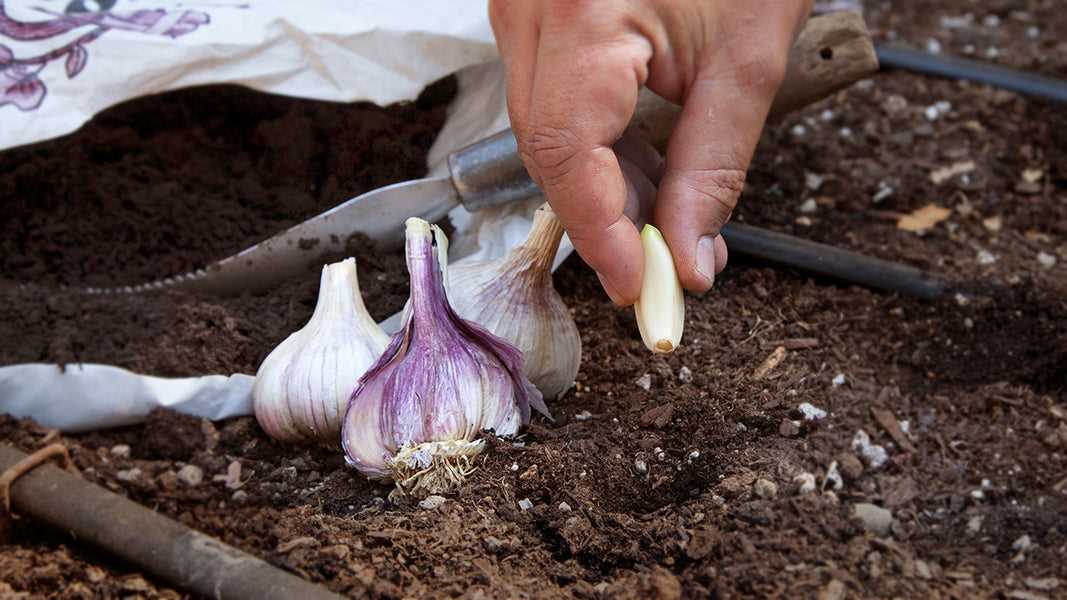
Being late with planting winter onions and garlic can increase the risk of pest and disease pressure. Pests and diseases thrive in conditions where plants are weak or stressed. Delayed planting may expose the crops to a longer period of vulnerability before the bulbs fully establish themselves, making them more susceptible to attacks.
5. Compromised Bulb Development
If winter onions and garlic are planted late, there is a risk of compromised bulb development. Late planting reduces the amount of time the plants have to establish healthy root systems and develop large, productive bulbs. This can result in smaller bulbs with less flavor and storage potential.
6. Delayed Harvest
Lastly, planting winter onions and garlic late can push back the harvest time. If the bulbs do not have enough time to reach maturity before winter set in, they may not have enough time to fully develop. Delayed harvesting can lead to subpar quality bulbs that do not store well, or even the loss of the crop if severe winter weather arrives before harvesting is complete.
It is important to consider these unfavorable weather conditions and their potential impact before deciding to plant winter onions and garlic late. If possible, it is generally recommended to stick to the optimal planting time to give the crops the best chance of success.
Lack of Time or Busy Schedule
If you are facing a lack of time or have a busy schedule, it can be challenging to find time to plant your winter onions and garlic. However, there are some strategies you can use to overcome this obstacle:
- Prioritize your tasks: Evaluate your daily schedule and identify any tasks that can be postponed or delegated to free up some time for planting. By prioritizing your tasks, you can create a dedicated time slot for gardening.
- Create a planting schedule: Plan out a specific time and date for planting your winter onions and garlic. Allocate a few hours or a dedicated weekend for this task and make sure to stick to your schedule.
- Utilize your weekends: If your weekdays are busy, use your weekends to catch up on gardening tasks. Set aside a few hours on Saturday or Sunday morning to plant your winter crops.
- Enlist help: If you have someone available to assist you, ask for their help in planting the onions and garlic. This can help you save time and get the job done more quickly.
- Consider container gardening: If you don’t have enough time for traditional planting, you can opt for container gardening. This allows you to plant your onions and garlic in pots or containers, which require less time and effort compared to traditional gardening methods.
- Break the task into smaller steps: Instead of trying to complete the planting all at once, break the task into smaller steps. For example, you can prepare the soil one day, plant the onions the next day, and plant the garlic the following day. This way, you can spread out the work and make it more manageable.
- Use ready-to-plant sets or seedlings: To save time, consider purchasing ready-to-plant sets or seedlings instead of starting from seeds. This can significantly reduce the time required for planting.
Remember, even if you are short on time, it’s important to prioritize your winter onions and garlic planting as they require a certain period of cold weather to develop properly. By employing these strategies, you can still achieve a successful harvest despite a busy schedule.
Unavailability of Planting Material
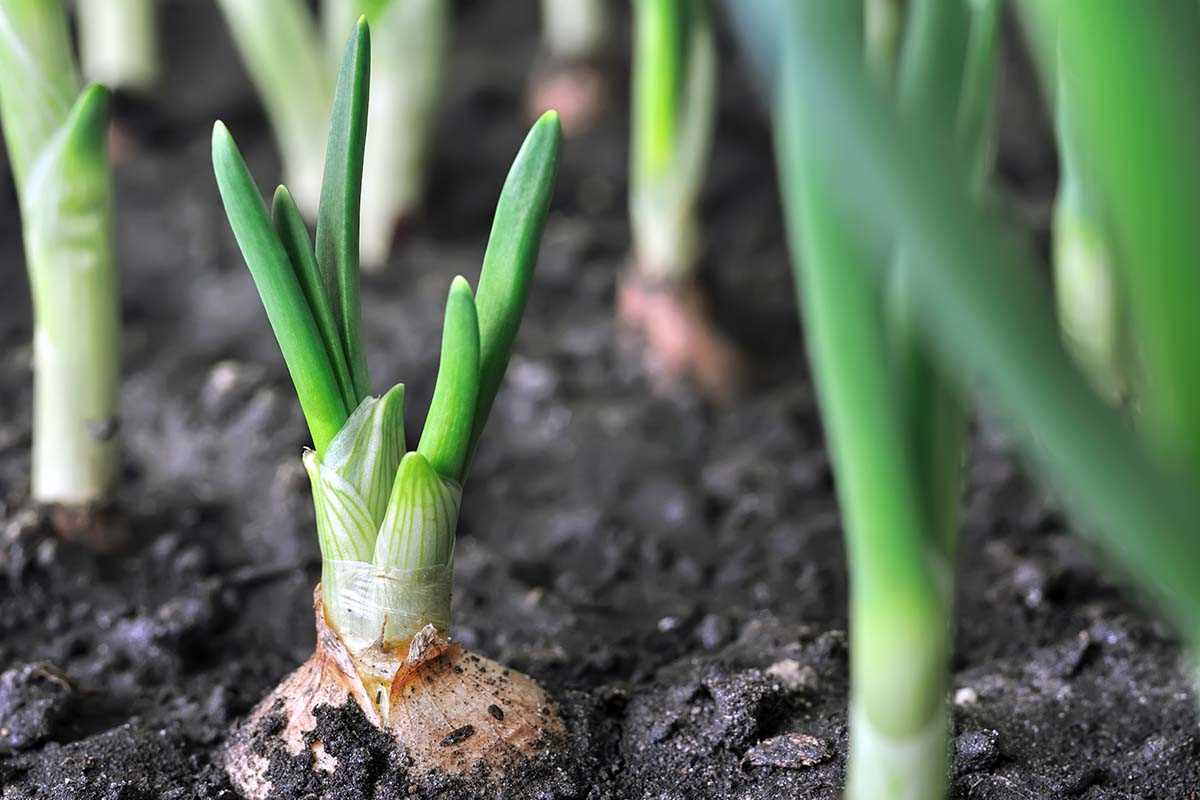
- Check local suppliers: Contact local gardening stores, seed companies, or agricultural centers to inquire about the availability of winter onion and garlic sets. They may have some remaining stock even if it’s beyond the usual planting season.
- Join gardening communities: Online gardening forums or social media groups can be useful sources of information. Join these communities, ask for recommendations, and see if any members have spare planting material they could share or sell.
- Seed exchange programs: Look for local seed exchange programs where gardeners swap or sell their surplus seeds and sets. Participating in these programs can help you find the planting material you need.
- Extend the search: If local options are limited, consider expanding your search to neighboring regions or online platforms that specialize in gardening supplies. This can increase the chances of finding the necessary planting material.
Insufficient Preparation of the Planting Site
If you are late with planting winter onions and garlic, one possible reason could be insufficient preparation of the planting site. Proper preparation of the soil is crucial for the success of these crops. Here are some key factors to consider:
Soil Testing
Before planting onions and garlic, it is important to conduct a soil test. This will provide information about the pH level, nutrient content, and soil structure. Based on the test results, you can make necessary amendments to optimize the soil conditions for planting.
Weed Control
Prior to planting, clear the planting site from any existing weeds. Weeds can compete with onions and garlic for nutrients and water, which can negatively impact their growth. Manual weeding or using herbicides can be employed to control weed growth.
Proper Drainage
Ensure that the planting site has proper drainage. Onions and garlic prefer well-drained soils, as excessive water can lead to rot and disease. If the soil is heavy and poorly drained, consider adding organic matter or creating raised beds to improve drainage.
Soil Amendment
Based on the soil test results, incorporate necessary organic matter such as compost or well-rotted manure to improve the soil structure and nutrient content. This will provide a fertile environment for the onions and garlic to grow.
Spacing and Depth
Make sure to follow the recommended spacing and planting depth for onions and garlic. Crowded plants can result in increased competition for resources, whereas planting too deep can hinder bulb development. Proper spacing and depth will promote healthy growth and yield.
Mulching
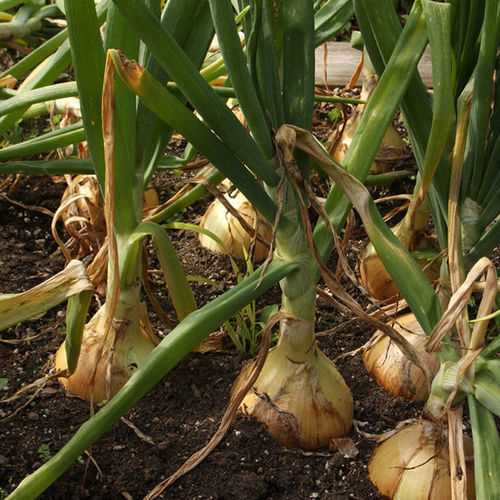
Consider mulching the planting site after the onions and garlic are planted. Mulch helps to conserve soil moisture, suppress weed growth, and regulate soil temperature. Organic mulches such as straw or leaves can be used.
Regular Watering and Care
Once planted, onions and garlic need regular watering to establish strong root systems. Monitor soil moisture levels and provide enough water to maintain adequate moisture. Additionally, remove any weeds that may emerge throughout the growing season to prevent competition.
By properly preparing the planting site and providing ongoing care, even if you are late with planting winter onions and garlic, you can still have a successful harvest.
Delayed Harvest of Previous Crops
If you are late with planting winter onions and garlic, it is important to assess the state of your previous crops and consider any possible causes for the delay in harvesting. Delayed harvest of previous crops can have several repercussions, including a shortened growing season for the next crop and increased susceptibility to diseases and pests.
Evaluate the Condition of the Previous Crops
Before proceeding with planting winter onions and garlic, it is important to evaluate the condition of the previous crops. Take note of any signs of disease or pest infestation, as these can affect the health of the new crop. If the crops are severely damaged, it may be necessary to remove and dispose of them properly to prevent the spread of diseases.
Amend the Soil
If the previous crops were not harvested in a timely manner, the soil may have been depleted of nutrients. Before planting winter onions and garlic, it is important to amend the soil with organic matter, such as compost or well-rotted manure. This will help replenish the nutrients and promote healthy growth of the new crop.
Consider Planting Different Varieties
If you are significantly delayed in planting winter onions and garlic, it may be advisable to consider planting different varieties that have a shorter growing season. Look for varieties that are known to mature quickly or have a shorter time to harvest. This will help ensure that you can still harvest a crop before the winter sets in.
Optimize Growing Conditions
To maximize the chances of a successful harvest, it is important to optimize the growing conditions for winter onions and garlic. Provide adequate sunlight, water, and ventilation to promote healthy growth. Additionally, consider using a protective covering, such as a row cover or mulch, to provide insulation and protect the plants from extreme weather conditions.
Maintain Proper Care and Monitoring
Once the winter onions and garlic are planted, it is important to continue providing proper care and monitoring. Regularly water the plants, monitor for signs of disease or pest infestation, and provide any necessary support or pruning. By taking proactive steps to care for the plants, you can increase the likelihood of a successful harvest.
In conclusion, a delayed harvest of previous crops can pose challenges when planting winter onions and garlic. However, by evaluating the condition of the previous crops, amending the soil, considering different varieties, optimizing growing conditions, and maintaining proper care and monitoring, you can increase the chances of a successful harvest.
Incorrect Storage of Planting Material
One of the reasons for being late with planting winter onions and garlic is the incorrect storage of planting material. If the onions and garlic are not stored properly, their quality may deteriorate, making them unsuitable for planting.
Here are some common mistakes in storing planting material:
- Poor Ventilation: Onions and garlic need proper air circulation to prevent rotting. Storing them in a closed container or plastic bag without ventilation can lead to the growth of mold and fungus, rendering the bulbs unfit for planting.
- Inadequate Moisture Control: Onions and garlic should be stored in a cool and dry place to maintain their quality. Excessive moisture can cause sprouting or rotting, while a lack of moisture can lead to shriveling and drying out of the bulbs.
- Improper Temperature: Onions and garlic prefer to be stored in cool temperatures between 32°F (0°C) and 50°F (10°C). Storing them in a warm environment can cause premature sprouting, while storing them in freezing temperatures can damage the bulbs.
- Incorrect Handling: Rough handling during storage can cause bruising and damage to the bulbs. It is important to handle the onions and garlic with care to prevent any physical injuries that may affect their quality.
To avoid the problems caused by incorrect storage, follow these guidelines:
- Choose a Proper Storage Location: Select a cool, dry, and well-ventilated area such as a basement or garage to store your onions and garlic.
- Use Proper Containers: Use mesh bags, wooden crates, or open baskets to store the bulbs. Avoid using plastic bags or airtight containers as they can trap moisture and hinder air circulation.
- Check Regularly: Inspect your stored onions and garlic regularly to remove any that are spoiling or sprouting. This will prevent the spread of rot or disease to the healthy bulbs.
- Avoid Mixing Varieties: Store different varieties of onions and garlic separately to prevent cross-contamination and preserve their individual characteristics.
- Consider Refrigeration: If you are unable to provide suitable storage conditions, you can store the planting material in the refrigerator. However, be cautious not to store them near fruits as the ethylene gas produced by ripening fruits can accelerate sprouting.
By following these guidelines and ensuring proper storage of your planting material, you can enhance the chances of successful growth and development of your winter onions and garlic.
Inadequate Knowledge or Experience
If you are late with planting your winter onions and garlic, it could be due to a lack of knowledge or experience in gardening. This is a common issue for beginners or those who have never grown onions or garlic before. Here are some steps you can take to overcome this challenge:
1. Learn from reliable sources

Start by educating yourself about the best practices for planting winter onions and garlic. There are many resources available online, such as gardening websites, forums, and YouTube channels, where experienced gardeners share their knowledge. Take the time to research and learn about the specific requirements and optimal planting times for onions and garlic in your region.
2. Seek advice from local experts
Connect with local gardening groups or visit your nearest gardening center to seek advice from experienced gardeners or horticulturists. They can provide insight into the specific challenges and conditions of your area and offer guidance on late planting. Local experts can also recommend suitable onion and garlic varieties that are more tolerant of late planting.
3. Experiment and learn from your mistakes
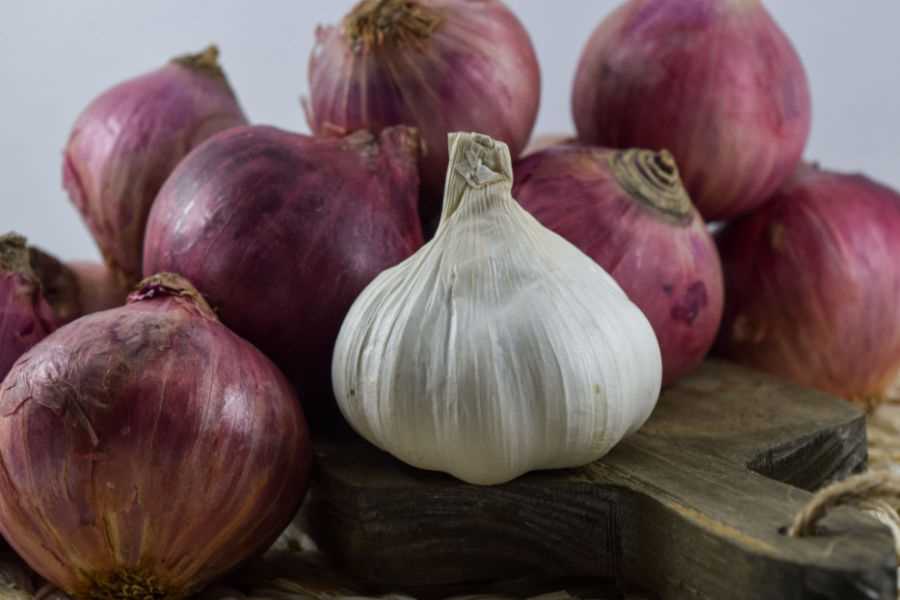
Gardening is a learning process, and sometimes the best way to improve is through trial and error. If you have already missed the optimal planting window for winter onions and garlic, consider experimenting with later planting dates to see how they perform in your garden. Keep a gardening journal to track the results and learn from any mistakes or successes.
4. Focus on preparation and care
While late planting may not yield the same results as planting at the optimal time, there are still steps you can take to improve your chances of success. Focus on preparing the soil by removing any weeds, loosening the soil, and adding organic matter, such as compost, to improve fertility. Provide proper care, including regular watering, mulching, and protecting the plants from harsh weather conditions.
5. Consider using transplants
If you are severely behind schedule or live in an area with a short growing season, consider using transplants instead of direct seeding. Transplants are onion or garlic seedlings that have been started indoors or in a greenhouse and are ready to be planted in the garden. This can help you catch up and still produce a crop, although it may not be as successful as planting from bulbs or sets.
Remember, every gardening experience is an opportunity to learn and improve. Don’t let a late start discourage you, but instead use it as a chance to gain knowledge, experiment, and improve your skills for future plantings.
Benefits of Late Planting
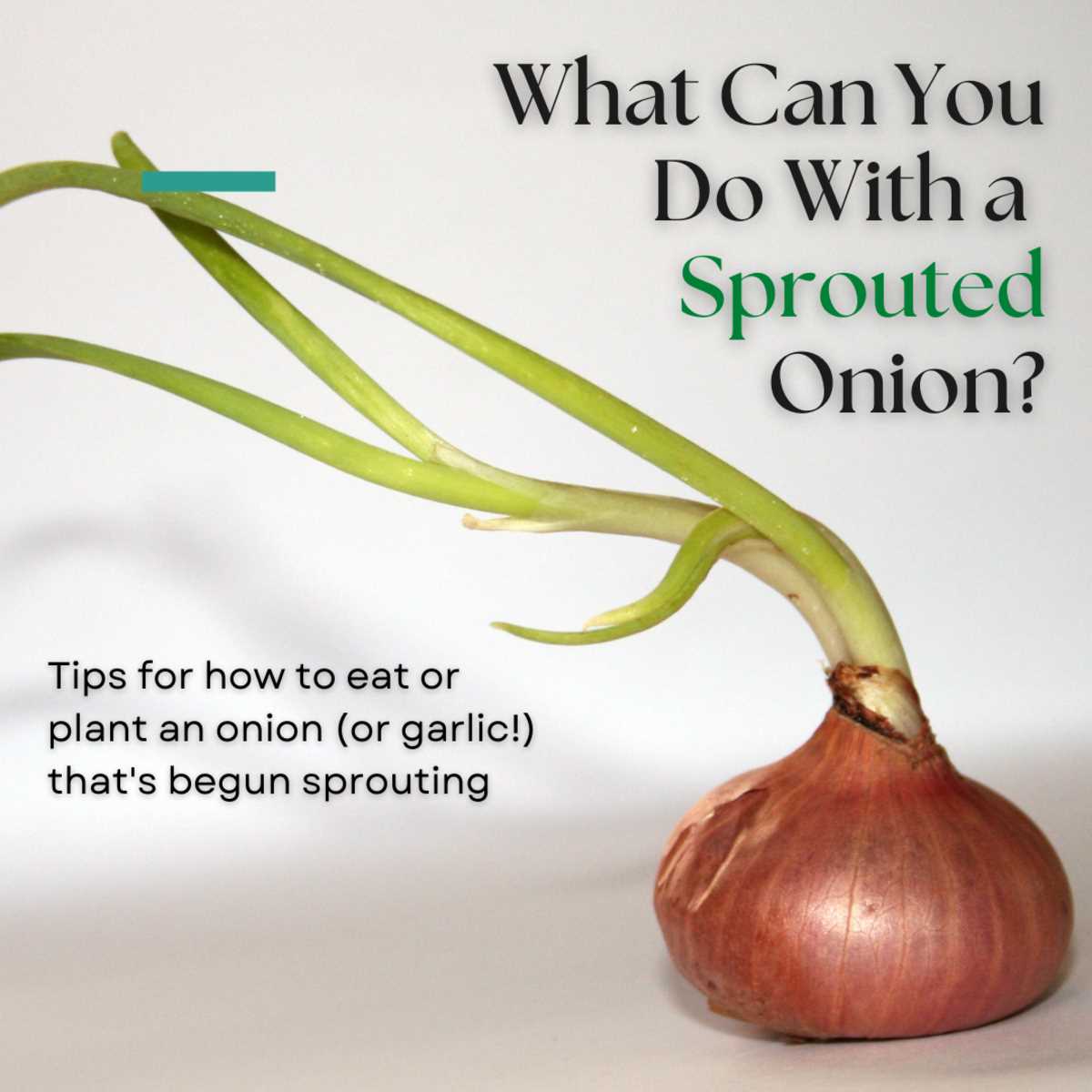
- Larger Bulbs: Planting winter onions and garlic late can actually result in larger bulbs. When planted late, the bulbs have more time to develop and grow, leading to bigger and more flavorful onions and garlic.
- Insect Control: Late planting can help reduce pest and insect pressure. Many pests and insects that commonly attack onions and garlic have specific life cycles and are more active earlier in the growing season. By planting late, you can avoid some of these pests and reduce the need for chemical controls.
- Lower Weeds: When planting late, the weed pressure may be lower compared to planting earlier in the season. Weeds tend to germinate and grow earlier in the season when temperatures are more favorable for their growth. By planting later, you can minimize competition with weeds and spend less time and effort on weed control.
- Extended Harvest: Late planting can result in an extended harvest period. By staggering the planting time, you can ensure a continuous supply of fresh onions and garlic throughout the season. This can be especially beneficial if you plan to use them for cooking or preserving.
- Opportunity for Experimentation: Late planting provides an opportunity to experiment with different varieties or growing techniques. You can try new varieties that are known to perform well in late planting conditions or test out new methods of cultivation. This can lead to interesting results and help you learn more about the optimal growing conditions for winter onions and garlic.
- Flexibility: Late planting offers flexibility in your gardening schedule. If you missed the ideal planting window, you can still plant and have a chance of success. It allows you to adapt to changing circumstances and make the best out of the situation.
In summary, while it is generally recommended to plant winter onions and garlic in a timely manner, late planting can offer several benefits. These include larger bulb sizes, reduced insect pressure, lower weed competition, extended harvest, opportunity for experimentation, and flexibility in your gardening schedule. So don’t worry if you are late in planting, there are still advantages to be gained from late planting.
“Question-Answer”
What is the optimal time for planting winter onions and garlic?
The optimal time for planting winter onions and garlic is in late summer or early fall, around 2-4 weeks before the first frost is expected.
What are the consequences if I am late with planting winter onions and garlic?
If you are late with planting winter onions and garlic, they may not have enough time to establish strong root systems before the winter freezes. This can lead to weaker plants and reduced yields.
Can I still plant winter onions and garlic if I missed the optimal planting time?
Yes, you can still plant winter onions and garlic if you missed the optimal planting time. However, it is important to do it as soon as possible to give them the best chance of establishing before the winter.
What are some tips for planting winter onions and garlic late?
If you are planting winter onions and garlic late, it is important to choose varieties that have a shorter growing season. Additionally, you can help them establish by providing extra protection, such as using row covers or mulching.
Can I plant winter onions and garlic indoors if I am late with outdoor planting?
If you are late with outdoor planting, you can try starting winter onions and garlic indoors and then transplanting them outside once they have established strong root systems. This can help compensate for the delayed planting.
What should I do if I missed the planting time for winter onions and garlic?
If you missed the planting time for winter onions and garlic, you can either choose to skip planting them for the current year or alternatively, you can consider planting them in early spring for a later harvest.
Are there any alternatives to planting winter onions and garlic if I am late?
If you are late with planting winter onions and garlic, you can consider planting other cold-tolerant crops such as spinach, kale, or winter lettuce. These crops can be planted later in the season and still have a good chance of success.







